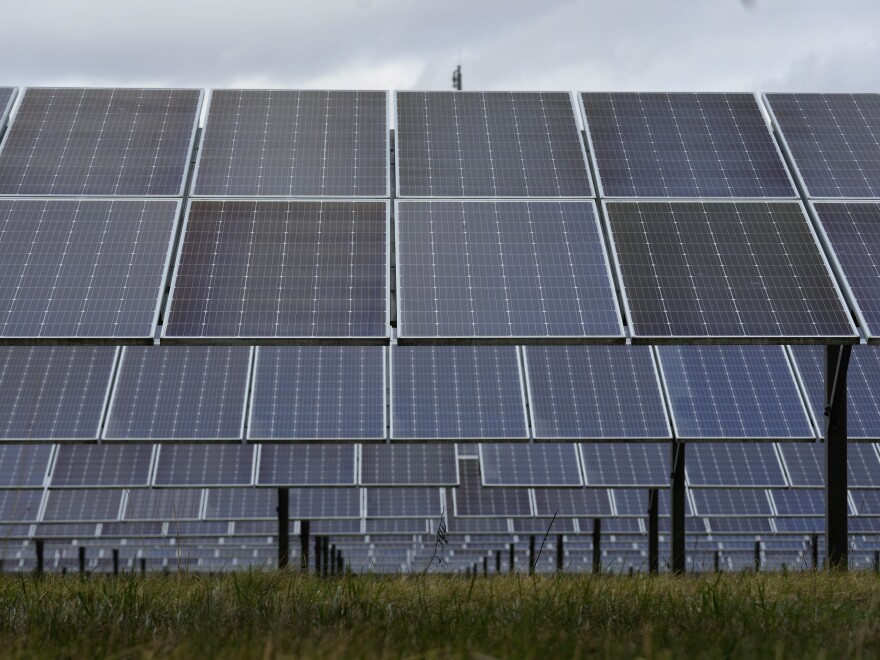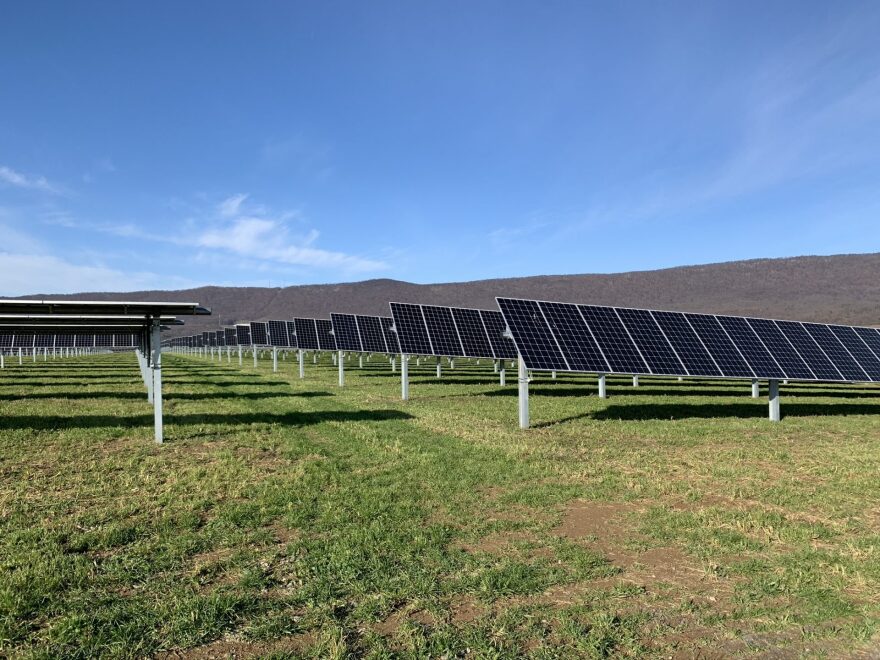BETHLEHEM, Pa. — A large-scale, cutting-edge solar project announced late last month seeks to offset electricity usage at three Lehigh Valley colleges — from almost 1,000 miles away.
“We prioritize aligning what students learn about in the classroom and what they see on campus,” said Delicia Nahman, Lafayette College’s director of sustainability. “And then the extension of our sustainability commitment into the community, locally and then broadly within the region and even nationally, and I think this project kind of helps to thread that story.”
Muhlenberg and Lafayette colleges, as well as Lehigh University, along with a handful of others, have formed a partnership to build and bring online a solar facility in western Kentucky. When completed, the facility will offset electricity usage at the institutions, effectively reducing greenhouse gas emissions from electricity generation to zero.
While the effort, called a power purchase agreement, is focused on reducing emissions to mitigate the impacts of climate change, the facility will also benefit Kentucky residents by providing tax revenue as well as clean, renewable energy while also giving Valley students the opportunity to study the construction process, as well as review data from the project, organizers said.
“It's not easy to feel a high level of confidence in all of those areas, and this project got us as close to those triple, quadruple wins as we could imagine.”Delicia Nahman, Lafayette College’s director of sustainability
“There were a number of criteria that we came to a consensus on, both around economic savings and price risk and ensuring that there was the right due diligence on whichever project developers we were ultimately going to sign a contract with,” said Nahman. “We also certainly considered environmental impact in the local community as well as educational and research opportunities.
“It's not easy to feel a high level of confidence in all of those areas, and this project got us as close to those triple, quadruple wins as we could imagine.”
Called the Sebree Solar II project, construction is expected to begin early next year, with commercial operation starting by the end of 2026. Local college officials did not release the cost of the 20-year contract.
Lehigh University did not respond to a request for comment by deadline.
‘More powerful, meaningful, impactful’
When electricity is bought from a grid, buyers pay for three different things, said Natalie Sobrinski, a sustainability specialist at Muhlenberg College. There’s the cost to produce the electricity and to deliver it, as well as additional fees if it’s created by a renewable energy source.
“But, because of the way the grid works and it all kind of gets mixed into the same power lines, you can't necessarily guarantee that the power the renewable energy that you're purchasing is actually the renewable energy that you're using,” Sobrinski said. “So, they separated it out and called them RECs, which are renewable energy credits.
“You can purchase those, and those are just a certification that you're supporting the production of renewable energy, and you pay for a certain amount of renewable energy credits to cover the electricity usage at your house or business.”
The facility will be built near the Ohio River in Robards, Kentucky. Over its 30-year lifespan, it’s expected to contribute approximately $12 million in additional tax revenue to Henderson County, and projected to provide enough energy to power more than 24,000 homes each year.

Other colleges in the agreement include Davidson College, Dickinson College, Elon University, Haverford College, Swarthmore College and Wake Forest University.
“It allows us to, essentially, count the renewable energy credits towards our consumption, and it makes our emissions, from an accounting perspective, neutral,” said Nahman.
This is the second power purchasing agreement for the colleges in the past half-decade.
Officials from Lehigh, Lafayette, Muhlenberg and Dickinson in February 2020 announced a similar plan, becoming the first group of colleges and universities in Pennsylvania to enter into such an agreement.
However, it never came to fruition — the contract was terminated due to price increases.
“I think there was a lot of disappointment that the initial contract had to be terminated,” she said. “I think we took it as an opportunity to reflect on our commitments, and to our desire to build the coalition and the consortium to include others that wanted to similarly demonstrate climate leadership.
“And, it ultimately turned into a much more powerful, meaningful, impactful opportunity to leverage our collective purchasing power to enable an even larger project in a dirty grid that had the same social, environmental and financial benefits that we were hoping for.”Delicia Nahman, Lafayette College’s director of sustainability
“And, it ultimately turned into a much more powerful, meaningful, impactful opportunity to leverage our collective purchasing power to enable an even larger project in a dirty grid that had the same social, environmental and financial benefits that we were hoping for.”
‘Really powerful shift’
Lafayette already has an on-campus solar array on the roof of Kirby Sports Center. Completed in early September 2021, the array is expected to offset 9,625 metric tons of carbon dioxide over its useful life — the equivalent of taking more than 2,000 cars off the road.
Officials have also installed a wind turbine and two solar photovoltaic panels at Metzgar Fields, near LaFarm in Forks Township, for demonstration and research purposes.
However, the college’s Climate Action Plan calls for both local and offsite renewable energy strategies.
“Part of the reasoning behind that was yes, scale and cost to do something locally on our campus,” said Nahman. "And this was a similar conversation that other schools in our consortium had as well.
“Not all of them have the land to have a project at the scale that's needed to account for what this offsite project could and to account for our own campus emissions.”
For Muhlenberg, located in Allentown, it just isn’t realistic to have a solar facility on campus — there isn't space.
“We're in the middle of an urban environment, much like many of the other institutions that we've partnered with. And we all still want to do something to help move this industry forward and decrease our environmental impact.”Natalie Sobrinski, a sustainability specialist at Muhlenberg College
“We're in the middle of an urban environment, much like many of the other institutions that we've partnered with,” Sobrinski said. “And we all still want to do something to help move this industry forward and decrease our environmental impact.”
By “combining forces,” the colleges found negotiating power “in not just an individual institution, but a conglomerate of institutions,” Sobrinski said.
“Because we were all higher ed institutions, we also lobbied with the generation company to have an educational component to this,” she said. “That includes internships for the students and access to the data for use in the classroom for research for the students.”
While the on-campus efforts are “a really good visible demonstration of our climate action leadership,” Nahman said, the Kentucky project serves as an opportunity.
“It produces educational opportunities and data for students and faculty to utilize in their classes and in their scholarship,” she said. “But to get to the scale that we really want, in being part of a consortium, we can get the scale and the cost.”
It also helps forward sustainability education across academic disciplines — fulfilling a growing need in the workforce.
“What we're hearing professionals say, even alumni, is that all careers can have a positive contribution to our social and environmental priorities and don't have to study environmental science to be able to do this work,” Nahman said. “And so I think it's this really powerful shift.
“And so if schools can help facilitate, project and take action in this area, it really makes what they're learning incredibly tangible, and it gives them the best platform to start their careers upon graduating from their institutions.”


